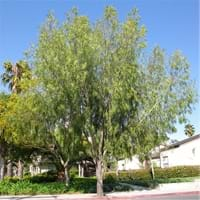Life Span
Perennial
Perennial
Type
Bulb or Corm or Tuber
Broadleaf Evergreen
Origin
South America
Australia
Types
Pamianthe cardenasii , Pamianthe parviflora , Pamianthe peruviana
Not Available
Number of Varieties
Not Available
Habitat
All sorts of environments
Sunny Edge, Woodland Garden Secondary
USDA Hardiness Zone
8-10
9-11
AHS Heat Zone
10-8
Not Available
Habit
Clump-Forming
Oval or Rounded
Flower Color
White
White, Ivory
Flower Color Modifier
Bicolor
Bicolor
Fruit Color
Green
Not Available
Leaf Color in Spring
Dark Green
Green, Dark Green
Leaf Color in Summer
Light Green
Green, Dark Green
Leaf Color in Fall
Several shades of Green
Green, Dark Green
Leaf Color in Winter
Light Green
Green, Dark Green
Leaf Shape
Strap shaped
Linear to lanceolate
Plant Season
Spring, Summer, Fall
Spring, Summer, Fall, Winter
Sunlight
Partial Sun, Partial shade
Full Sun
Type of Soil
Loam, Sand
Loam, Sand
The pH of Soil
Acidic, Neutral, Alkaline
Acidic, Neutral, Alkaline
Soil Drainage
Average
Well drained
Bloom Time
Spring, Late Spring, Early Summer, Summer, Late Summer
Early Spring, Fall, Late Winter
Tolerances
Drought
Pollution, Drought
Where to Plant?
Ground, Pot
Ground
How to Plant?
Offsets
Cuttings, Seedlings
Plant Maintenance
Medium
Medium
Watering Requirements
Keep the ground moist but not water-logged
Water regularly for 2 months
In Summer
Lots of watering
Lots of watering
In Spring
Moderate
Moderate
In Winter
Average Water
Average Water
Soil pH
Acidic, Neutral, Alkaline
Acidic, Neutral, Alkaline
Soil Type
Loam, Sand
Loam, Sand
Soil Drainage Capacity
Average
Well drained
Sun Exposure
Partial Sun, Partial shade
Full Sun
Pruning
Pinch or prune as they grow to promote branching and bushiness, Remove damaged leaves, Remove dead branches, Remove dead leaves, Requires little pruning
Pruning may be required for height clearance
Fertilizers
All-Purpose Liquid Fertilizer, High phosphorus
Does not require fertilizer once established
Pests and Diseases
Leaf spot, Mosaic viruses
Free of serious pests and diseases
Plant Tolerance
Drought
Drought
Flowers
Showy
Insignificant
Flower Petal Number
Single
Not Available
Foliage Texture
Coarse
Fine
Foliage Sheen
Glossy
Glossy
Attracts
Bees, Birds, Bumblebees, Butterflies, Hummingbirds, pollinators
Blowflies, Insects
Allergy
Unknown
Mild Allergen
Aesthetic Uses
Beautification, Bouquets, Ornamental use, Showy Purposes
Not Used For Aesthetic Purpose
Beauty Benefits
No Beauty Benefits
Not Available
Environmental Uses
Air purification
Air purification
Medicinal Uses
No Medicinal Use
Anodyne, Odontalgic
Part of Plant Used
Not Available
Wood
Other Uses
Beneficial species for attracting pollinators, Decoration Purposes
Used as a fodder tree in agricultural areas, Useful for shade
Used As Indoor Plant
No
No
Used As Outdoor Plant
Yes
Yes
Garden Design
Bog Garden, Container, Feature Plant, Foundation, Mixed Border, Water Gardens
Feature Plant, Hedges, Screening, Wind Break, Shade Trees, Street Trees, Topiary, Bonsai, Espalier
Botanical Name
HYMENOCALLIS longipetala
GEIJERA parviflora
Common Name
Peruvian Daffodil, Spiderlily
Wilga, Native Willow
In Hindi
peruvian daffodil
Wilga
In German
peruvian daffodil
Pirol
In French
peruvian daffodil
loriot
In Spanish
Pamianthe
oriol
In Greek
peruvian daffodil
φλώρος
In Portuguese
peruvian daffodil
papa-figos
In Polish
peruvian daffodil
Wilga
In Latin
peruvian daffodil
oriole
Phylum
Magnoliophyta
Charophyta
Class
Liliopsida
Equisetopsida
Order
Asparagales
Sapindales
Family
Amaryllidaceae
Rutaceae
Clade
Angiosperms, Monocots
Angiosperms, Eudicots, Rosids
Tribe
Clinantheae
Not Available
Subfamily
Amaryllidoideae
Not Available
Number of Species
Not Available
Not Available
Importance of Peruvian Daffodil and Wilga
Want to have the most appropriate plant for your garden? You might want to know the importance of Peruvian Daffodil and Wilga. Basically, these two plants vary in many aspects. Compare Peruvian Daffodil and Wilga as they differ in many characteristics such as their life, care, benefits, facts, etc. Every gardener must at least have the slightest clue about the plants he wants to plant in his garden. Compare their benefits, which differ in many ways like facts and uses. The medicinal use of Peruvian Daffodil is No Medicinal Use whereas of Wilga is Anodyne and Odontalgic. Peruvian Daffodil has beauty benefits as follows: No Beauty Benefits while Wilga has beauty benefits as follows: No Beauty Benefits.
Compare Facts of Peruvian Daffodil vs Wilga
How to choose the best garden plant for your garden depending upon its facts? Here garden plant comparison will help you to solve this query. Compare the facts of Peruvian Daffodil vs Wilga and know which one to choose. As garden plants have benefits and other uses, allergy is also a major drawback of plants for some people. Allergic reactions of Peruvian Daffodil are Unknown whereas of Wilga have Mild Allergen respectively. Having a fruit bearing plant in your garden can be a plus point of your garden. Peruvian Daffodil has no showy fruits and Wilga has no showy fruits. Also Peruvian Daffodil is not flowering and Wilga is not flowering . You can compare Peruvian Daffodil and Wilga facts and facts of other plants too.





